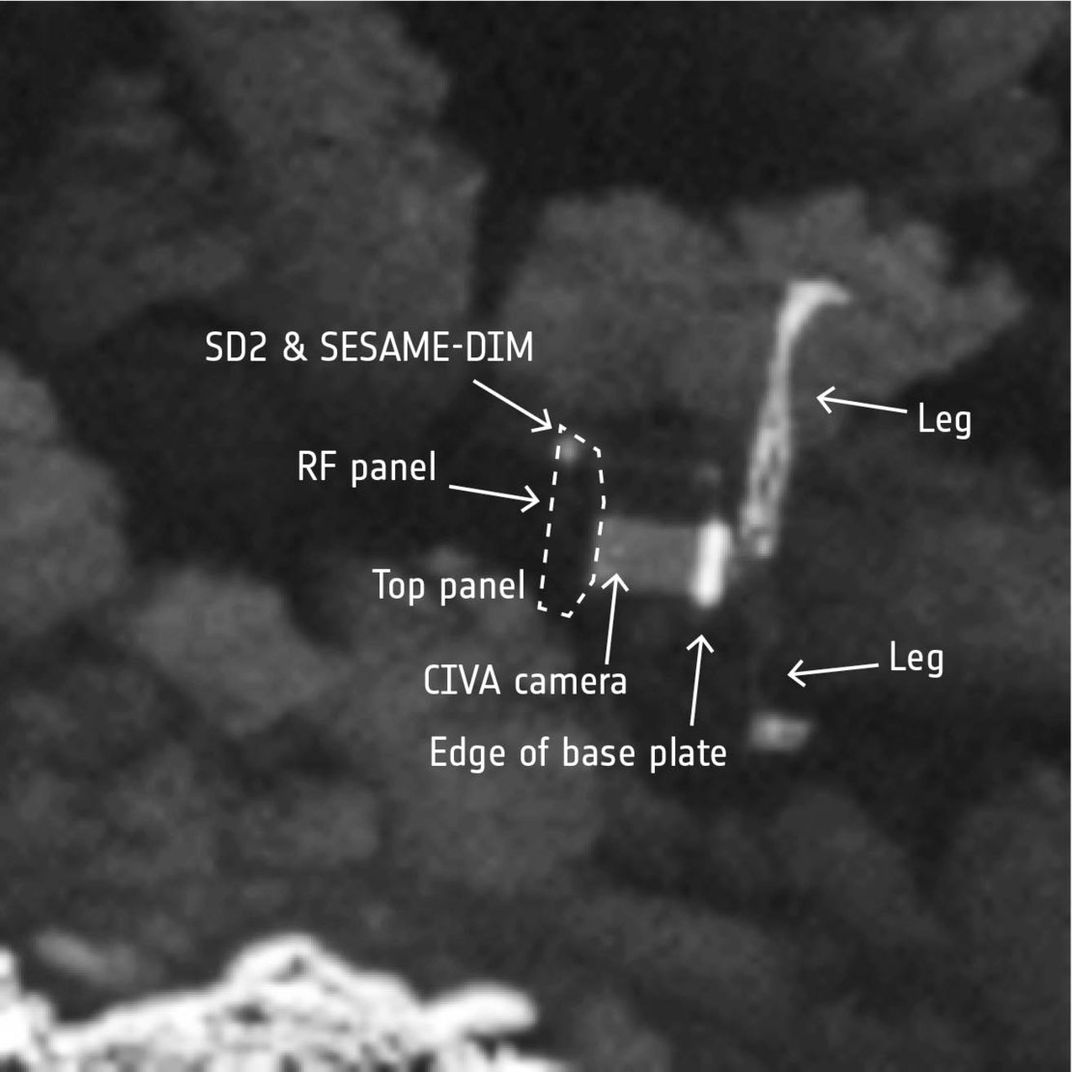After Two Years of Searching, Comet Lander Philae Finally Found
Photographs of the small probe come just weeks before the mission ends with Rosetta’s comet touchdown
/https://tf-cmsv2-smithsonianmag-media.s3.amazonaws.com/filer/ac/16/ac16bd95-d688-42dd-b9fe-bf9307c2c1b5/osiris2.jpg)
In the last days of the Rosetta mission, the robotic lander Philae has been found squeezed into a shadowy crack on the comet it was sent down to explore in 2014. Its discovery lends extra credence to the three days of scientific data it transmitted after being the first craft to ever land on a comet.
“Philae was there to provide the ground truth. Now we know exactly where that ground is,” Rosetta project scientist Matt Taylor tells Motherboard.
Philae’s location had been narrowed down to tens of metres, according to the European Space Agency, but could not be identified with low-res images. It wasn’t until Rosetta captured high-resolution pictures of the washing-machine-sized probe could scientists confirm its location on Comet 67P/Churyumov-Gerasimenko. The find gives researchers context for the wealth of information Philae’s short mission provided.
On November 12, 2014, Philae was supposed to land and use harpoons to help anchor it to the comet. But those harpoons didn’t fire and Philae bounced instead of landing. It finally settled in two hours later in the spot now called Abydos, where it was found yesterday. One of its three legs still remained frozen in the air and only one of its two solar panels are able to gather sunlight.
After the bumpy landing, the solar-powered vehicle was active for three days, sending back data including a risky soil analysis that required drilling into the comet’s surface. Because Philae wasn’t secure, using the drill could have sent the craft flying.

Mission control sent commands to move the lander’s main body in hopes of getting more sun to its solar panels, but it fell asleep—although not long before it was scheduled to do so, according to the ESA.
The lander was silent until June/July 2015, when it caught some rays as the comet came closer to the Sun. It sent more data to the ESA during an 85-second communication, but fell silent again. Yesterday’s find also helps explain why Philae has had trouble sending information to Rosetta, which is then transmitted home. The lander is currently lying on its side, with the antenna from its communication system pointing towards rocks, writes Loren Grush for The Verge.
Earlier this year, scientists tried to reach Philae one last time, receiving only silence. “We were beginning to think that Philae would remain lost forever,” says Rosetta mission manager Patrick Martin in an ESA press release.
This is one of the last moments where the discovery would be possible. On September 30, the Rosetta spacecraft that carried Philae will join the vehicle on the comet’s surface, sending back “once-in-a-lifetime” information about the comet on the way down before going silent.
That’s when the real science will begin, says Taylor: “We have years of work ahead of us, thoroughly analysing its data.”